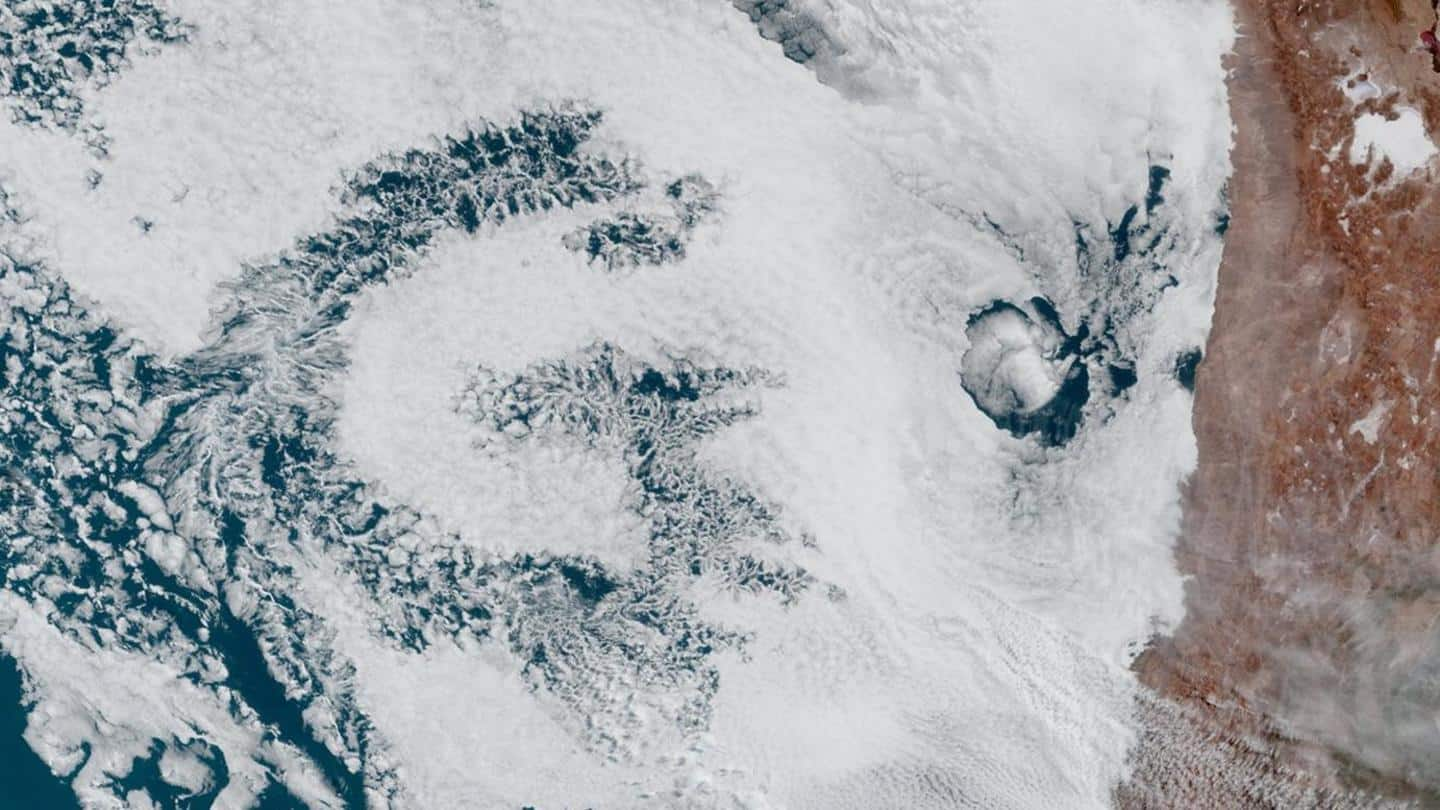
NASA spots 100km wide peculiar cloud forming the word "GO"
What's the story
Caspian Sea is no stranger to clouds hovering over it. However, a cloud spotted by NASA's Moderate Resolution Imaging Spectroradiometer (MODIS) over the world's largest inland water body has become the talk of the town.
The peculiarly-shaped cloud resembling something from a cartoon or a painting has well-defined edges unlike typical diffused and dispersed clouds.
It belonged to the stratocumulus category.
Context
Why does this story matter?
The world of astronomy has been quite busy the last couple of weeks. Fastest-growing black hole, cosmic cannibalism, and now the picturesque, cartoon-like cloud forming "GO."
The cloud generated a lot of interest from laymen on social media and professionals alike.
It was the well-defined borders of the cloud that led to its instant popularity across the world.
The cloud
The cloud belonged to the stratocumulus category
The cloud spotted over the Caspian Sea is a small stratocumulus cloud, according to Bastiaan van Diedenhoven of Netherland's space research agency SRON.
Typically formed at low altitudes, the cloud in question was found at an altitude of 1,500m. It spanned over 100km.
Cumulus clouds are usually found in good weather conditions and are detached. They are generally cauliflower-shaped.
Reasons
What is the reason for the sharp edges?
The sharp edges of clouds are often a result of dry, warm air from the land colliding with closer, moist air over the ocean. The cloud forms at the boundary of that collision.
Such clouds are usually seen off the west coast of Africa.
The cloud over the Caspian Sea is thought to have dissipated when it reached the Makhachkala coast, Russia.
Information
Social media celebrated the cloud with interesting comparisons
The images of the cloud created a riot on social media with many people liking and sharing the picture. Twitter users took a special liking to it with one user commenting, "zoom in more it spells GOD."
Twitter Post
NOAA Statellites got creative with the comparison
#TGIF!
— NOAA Satellites (@NOAASatellites) May 6, 2022
While we're happy it's Friday, @NOAA satellites never rest, keeping a constant and vigilant watch over Earth's weather.
We were surprised to see this interesting pattern in the marine stratocumulus clouds off the coast of Chile today, that appears to form the letter "G." pic.twitter.com/08HuqAvloq